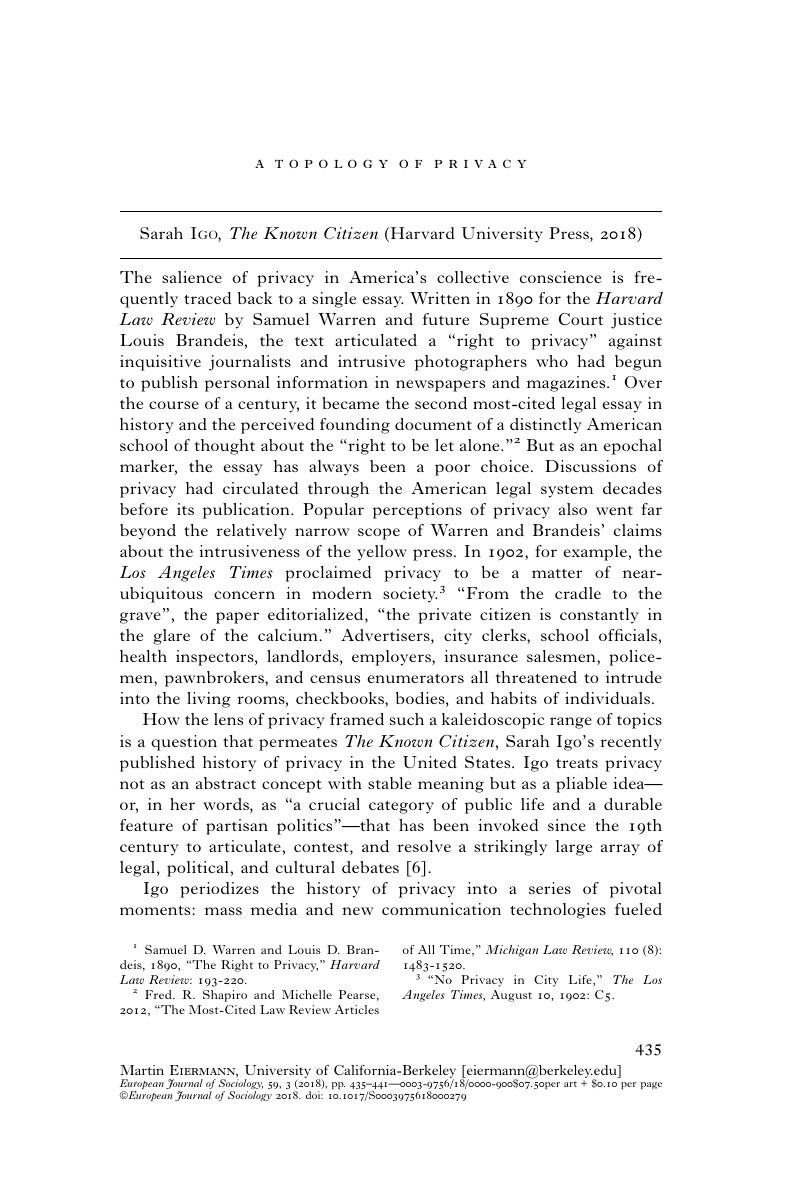No CrossRef data available.
Article contents
A Topology of Privacy - Sarah Igo, The Known Citizen (Harvard University Press, 2018)
Published online by Cambridge University Press: 31 January 2019
Abstract

- Type
- Book Reviews
- Information
- European Journal of Sociology / Archives Européennes de Sociologie , Volume 59 , Issue 3 , December 2018 , pp. 435 - 441
- Copyright
- Copyright © A.E.S. 2018
References
1 Samuel D. Warren and Louis D. Brandeis, 1890, “The Right to Privacy,” Harvard Law Review: 193-220.
2 Fred. R. Shapiro and Michelle Pearse, 2012, “The Most-Cited Law Review Articles of All Time,” Michigan Law Review, 110 (8): 1483-1520.
3 “No Privacy in City Life,” The Los Angeles Times, August 10, 1902: C5.
4 Hannah Arendt, 1958, The Human Condition (Chicago, The University of Chicago Press: 35).
5 James Rule, 1973, Private Lives and Public Surveillance (London, Allen Lane).
6 Raymond Geuss, 2001, Public Goods, Private Goods (Princeton, Princeton University Press).
7 Barrington Moore, 1984, Privacy: Studies in Social and Cultural History (London, Routledge).
8 Edward Shils, 1966, “Privacy: Its constitution and vicissitudes,” Law and Contemporary Problems, 31(2): 281-306.
9 Richard Sennett, 1977, The Fall of Public Man (New York, W. W. Norton & Company).
10 Vincent Dubois, 2012, “Le rôle des street-level bureaucrats dans la conduite de l’action publique en France” [available at : https://halshs.archives-ouvertes.fr/halshs-00660673].




